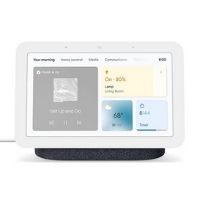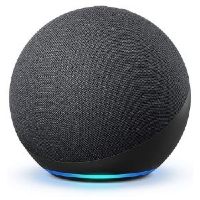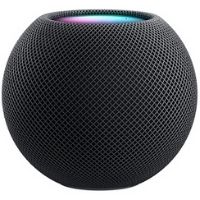The Matter smart home interoperability protocol is finally here, and it's the future of smart home automation. It promises to transform how we control smart devices with more security and choices. Our ultimate guide to Matter answers common questions to help you prepare for a Matter-powered smart home.
Ultimate Guide to Matter Smart Home
SafeWise experts have years of firsthand experience testing the products we recommend. Learn how we test and review.
By signing up, you agree to our Terms and Conditions and Privacy Policy.
Getting to know Matter
Video: Matter Smart Home explained
Subscribe to our YouTube channel and learn how to protect your home, loved ones, and belongings.
What is Matter, and how does it work?
Matter is a next-generation smart home platform that connects devices using Internet Protocol (IP) networking. It's the product of a partnership between the world's largest tech companies, including Apple, Amazon, Comcast, Google,† Samsung, Signify, and hundreds of others.
Matter aims to reduce fragmentation in the smart device market while improving security and reliability. What does this mean for you? You’ll be able to buy compatible devices without hours of research.
Although Matter isn't replacing existing smart home platforms like Amazon Alexa, Apple HomeKit, Google Assistant, Samsung SmartThings, and many others, it creates a standard language allowing them to work together and share control over your devices.
What Matter means for you
Compatibility has always been the biggest barrier to mainstream smart home adoption. It limits your choices when buying products and keeps you from getting the most out of your smart home. While this model works well enough for enthusiasts and pros, it's confusing for everyone.
Matter wants to rebuild the way you think about smart home technology:
- Buying new smart devices won't come with as many compatibility headaches.
- Using a single app to control devices will be easier.
Google Nest devices, like the Google Nest Thermostat, are a prime example of what Matter's promising. They don't natively support Apple HomeKit—you can't control them using Siri or the Apple Home app. But with Matter, your Nest device gains access to Apple's outstanding smart home platform for the first time.
How Matter works
The IP-based protocol behind Matter isn't replacing existing smart home ecosystems as much as helping them work together. And while Matter's an open-source platform that any device maker can use, it must join the Connectivity Standards Alliance (CSA)—Matter's governing body—and submit products to authorized test labs as part of a certification program.
On the hardware side, Matter works using one or more wireless technologies:
- Wi-Fi is available on practically every computer and smartphone, making it a natural choice for wireless communication between Matter devices—and, if necessary, the internet.
- Ethernet uses a wired connection and offers many of the same benefits as Wi-Fi.
- Thread is a low-power smart home protocol that creates a mesh network between devices—similar to Zigbee. Thread is an ideal choice for battery-powered devices.
Matter supports Bluetooth during the device setup process, but you can't connect Bluetooth-only devices to your Matter network without using a Wi-Fi, Thread, or Ethernet bridge.
Do I need a smart hub to use Matter devices?
Matter devices using Wi-Fi and Ethernet don't require a hub to communicate, but you still need a Matter controller for setup. While "Matter controller" sounds like a hub, it's simply whatever compatible device you use to set up and control your devices—like a smartphone or smart speaker.
You'll need a Thread border router if your Matter device uses Thread. This is essentially any Thread device that connects to Wi-Fi and has a continuous power source. (Thread devices using batteries, like sensors and smart locks, stay inactive when they aren't sending status reports or receiving commands.)
No hard-and-fast rule says a Matter controller and a Thread border router can't be the same device. The Nest Hub (2nd Gen), Apple HomePod Mini, and Amazon Echo (4th Gen) will all function as both after Matter launches.
Info current as of post date. Offers and availability may vary by location and are subject to change.
Info current as of post date. Offers and availability may vary by location and are subject to change.
Info current as of post date. Offers and availability may vary by location and are subject to change.
Matter support isn't coming to every smart home product immediately—you won't see any security cameras or robot vacuums until a future version. Matter currently supports these device types:
- Lighting and electrical
- HVAC controls
- Window coverings and shades
- Safety and security sensors
- Door locks
- Media devices, including TVs
- Controllers (both devices and applications)
- Bridges
Do all of my devices need Matter certification to work together?
You can control Matter and non-Matter devices in the same app—if they're in the same ecosystem. If something worked with the Google Home app before Matter, it would continue working with any Matter-certified devices you add to Google Home later.
The biggest hurdle for uncertified devices is that they can't use the Matter network to communicate with other ecosystems without a bridge.
A bridge, like a Thread border router, makes it possible to translate data into a Matter-friendly format. This means you don't need to rely on Matter alone—using incompatible Z-Wave devices is possible as long your Matter hub supports Z-Wave.
Automation features like scenes, routines, and energy monitoring aren't universal with Matter. You must rely on the built-in capabilities of your preferred app for these tools—though this may change in future versions of the Matter standard. But for now, a thermostat may offer more scheduling options with HomeKit than Google Home and vice versa.
Will Matter work offline?
One of Matter's most significant benefits is that everything connects to a local network via Wi-Fi, Thread, or Ethernet. A local network doesn't rely on an internet connection to function—something previous Wi-Fi devices required—so your devices will work faster because there's no need to send data to a cloud server for processing.
Local control also keeps information from Matter-enabled devices more secure and private since an internet connection is unnecessary when you're home. Your IoT devices connect to the internet only when you access them remotely via a Matter controller.
Will older devices work with Matter?
Any smart home device that uses Wi-Fi, Thread, or Ethernet has the potential for Matter compatibility. It ultimately depends on which brands pursue Matter certification. Once certified, brands can update the device's firmware with Matter support.
Matter's a big enough deal that you'll probably get an email or notification if your device earns the certification. Amazon, Google Nest, and Samsung SmartThings confirmed that Matter support is coming to existing devices.
We suspect many recent products will eventually support Matter since certifying an existing product may be easier and cheaper than designing a new one. For example, Google plans to add Matter functionality to the original Google Home smart speaker—a device it first released in 2016.
When can I use Matter-compatible devices?
The CSA released the Matter 1.0 standard and opened the product certification program in October 2022. New and existing products wanting to offer Matter compatibility must obtain certification before they can add support.
We don't know how long the device certification process takes, but we imagine you'll start seeing the first products with the Matter logo by next month.
Matter smart home FAQ
Matter won't replace the current smart home protocols—it just enables more interoperability. You'll still find new smart home devices using protocols like Wi-Fi, Z-Wave, Thread, Zigbee, and Bluetooth.
The main difference is that these products may also have a Matter certification that guarantees they can talk to each other as long there's a Matter controller or Thread border router.
At the Apple Worldwide Developers Conference 2022, the company revealed that one of its contributions to Matter was Apple HomeKit.
Corey Wang, Producer, Human Interface Design at Apple, said: "We contributed HomeKit, our smart home framework, as the foundation of this new standard, so it's built on the same core principles and maintains the highest level of security."
While this is a noteworthy contribution, other Matter members—like Amazon, Google, Signify, and Samsung SmartThings—also brought meaningful innovations to the Matter standard.
Not yet. Considering Ring's parent company, Amazon, is one the most prominent names behind the Matter standard, we think it's inevitable that Ring devices will support Matter. Still, Matter 1.0 doesn't support security cameras, so you'll need to wait a bit before Ring cameras and video doorbells will work with Matter. Non-camera Ring products should work with Matter 1.0 after certification.
Wyze is a member of the Connectivity Standards Alliance (CSA) that governs the Matter standard. It's unlikely to update existing products with Matter support but intends to release Matter-compatible products in the future. Since Matter 1.0 lacks support for security cameras, we don't expect to see any Matter-compatible Wyze cameras anytime soon.
Related articles on SafeWise
Product prices and availability are accurate as of the date/time indicated and are subject to change. Any price and availability information displayed on Amazon at the time of purchase will apply to the purchase of this product. Safewise.com utilizes paid Amazon links.
Certain content that appears on this site comes from Amazon. This content is provided "as is" and is subject to change or removal at any time.
†Google, Google Nest, Google Assistant, and other related marks are trademarks of Google LLC.
Recent Articles









